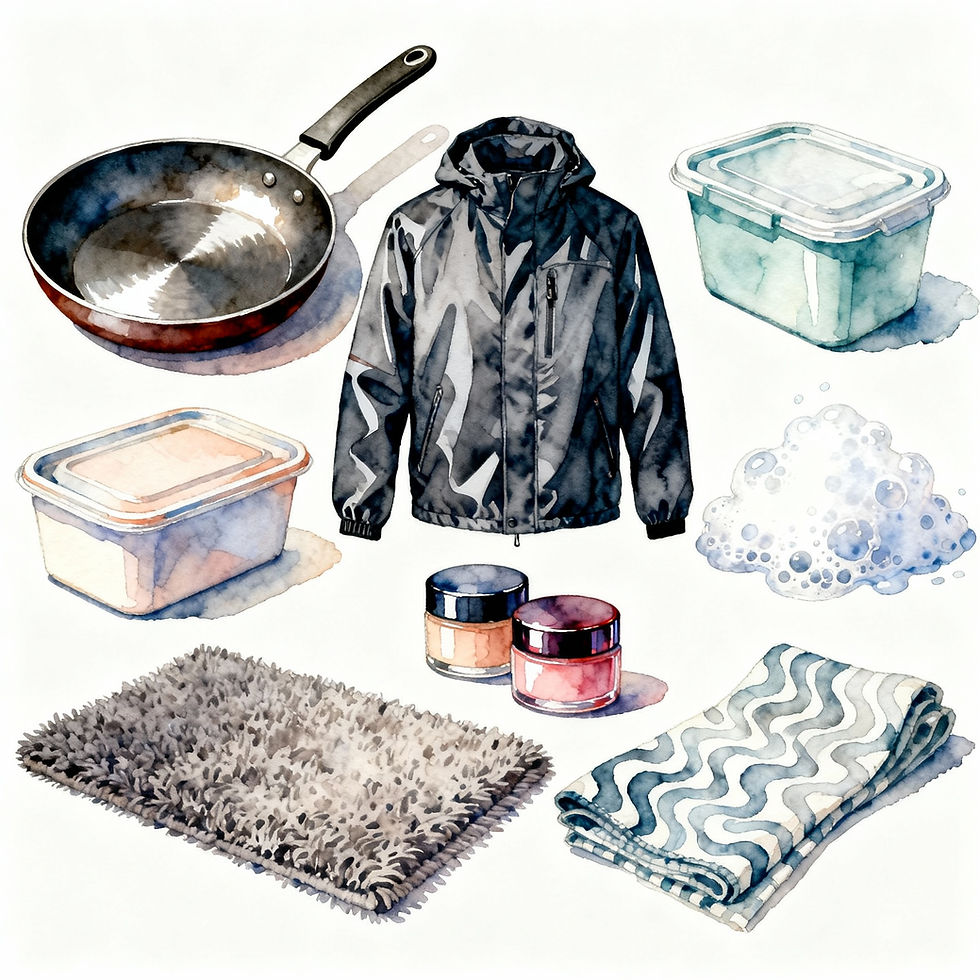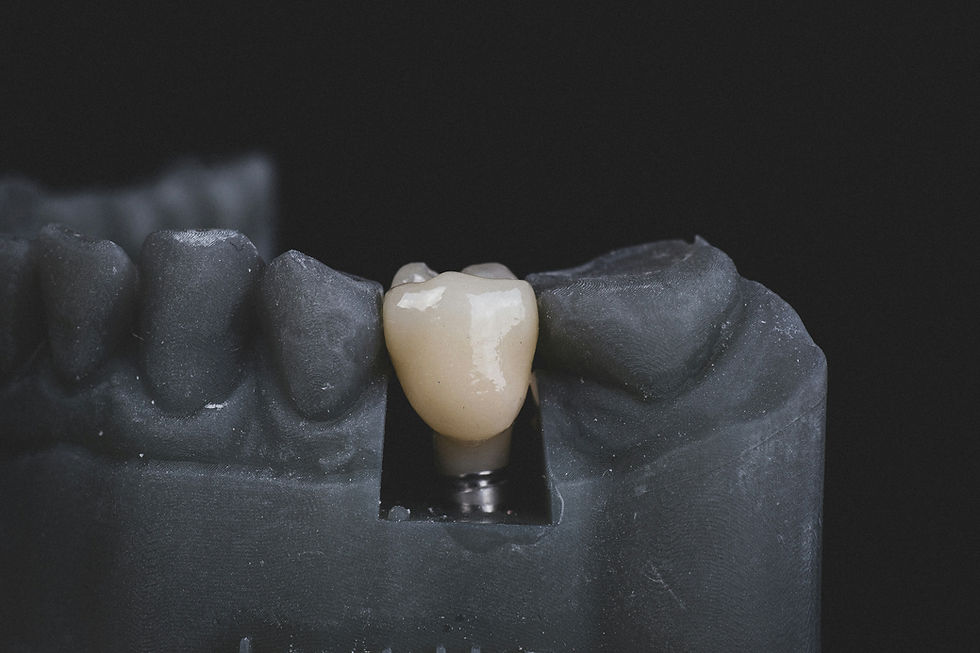How Can Chitin and Chitosan Aid Moisture Retention in the Cosmetics, Pharmaceutical and Medical Devices Industries?
- Entoplast

- Feb 26
- 5 min read

In recent years, the search for sustainable and effective biopolymers has garnered considerable attention from various industries, particularly cosmetics, pharmaceuticals, and medical devices. You may have seen our previous posts on haemostatics, FDA/EMA compliance, drug delivery or 3D printing. Among the most promising of biopolymers are chitin and its derivative chitosan
This article explores the multifunctional roles of chitin and chitosan in moisture retention, their applications across different sectors, the advantages of sourcing from Black Soldier Flies, and the substantial market potential these materials hold.
Unleashing the Potential of Chitin and Chitosan
Moisture Retention: A Key Factor in Product Efficacy
Chitin and chitosan have gained recognition for their unique properties that make them indispensable in formulations requiring enhanced moisture retention. These biopolymers exhibit impressive hygroscopic behaviour, absorbing moisture from the air and maintaining an optimal level of hydration in formulations. In cosmetic applications, this property is crucial for moisturising creams, lotions, and serums, which aim to deliver long-lasting hydration to the skin.

Research has shown that chitosan derivates such as carboxymethyl chitosan (CMCS) can exhibit moisture retention properties comparable to or even surpassing established moisturisers like Hyaluronic Acid (HA) and propylene glycol. A 0.25% aqueous solution of N-CMCS has been shown to match the moisture-retention of 20% propylene glycol solution, and its viscosity of HA (Jimtaisong & Saewan, 2014). This is particularly beneficial for consumers seeking effective skincare solutions, as maintaining skin moisture is vital for preventing dryness, irritation, and premature aging.
Moreover, chitosan’s ability to form a natural barrier on the skin not only enhances moisture retention but also provides protection from environmental pollutants and bacteria (Guzmán et al., 2022). The combination of these attributes positions chitosan as a promising candidate for skin-care products, contributing to both product efficacy and consumer satisfaction.
Pharmaceutical Applications: Enhanced Drug Delivery and Stability
Chitin and chitosan's properties extend beyond cosmetics into the pharmaceutical realm. They act as effective excipients in drug formulations, offering advantages such as biocompatibility, biodegradability, and non-toxicity. In particular, chitosan has been shown to enhance the solubility and stability of drugs, making it invaluable in creating controlled-release formulations.
Notably, chitosan can facilitate gene delivery and the encapsulation of various bioactive compounds, allowing for targeted therapy and enhanced bioavailability. Studies have shown that chitosan nanoparticles could effectively deliver anticancer drugs to targeted tissues, significantly improving therapeutic outcomes (Shanmuganathan et al., 2019).
Additionally, its moisture-retaining properties play a crucial role in maintaining the integrity of drug formulations, preventing degradation caused by humidity. In a high-value industry like pharmaceuticals, where product efficacy and shelf life are paramount, chitin and chitosan present significant advantages.
Moisture Retention in Medical Devices: Biocompatibility and Performance
Chitosan's application in medical devices is equally impressive. It is increasingly utilised in wound dressings, hydrogels, and tissue engineering scaffolds. The moisture retention capability of chitosan helps create an optimal healing environment for wounds. By maintaining moisture levels, chitosan dressings can prevent scab formation and promote faster healing.

Research indicates that chitosan-based wound dressings such as chitosan hydrogels facilitate cell proliferation while maintaining a moist environment, enabling faster recovery without the complications of scarring. Furthermore, chitosan's antimicrobial properties reduce the likelihood of infections, which is critical in both wound care and surgical applications (Liu et al., 2018).
In tissue engineering, chitosan serves as a scaffold material that supports cell attachment and growth, while its hydrophilic nature allows for nutrient and waste exchange, further enhancing tissue regeneration (Levengood & Zhang, 2014). This application highlights not only chitosan's utility in moisture retention but also its functional versatility in complex biological settings.
Shifting from Crustaceans to Insects: The Advantages
Sustainability and Reduced Allergenic Concerns
Traditionally, the extraction of chitin from crustaceans poses considerable environmental and health challenges. Overfishing of shrimp, crabs, and other shellfish disrupts marine ecosystems, while the process generates substantial waste from discarded shells, contributing to pollution. Additionally, crustacean derived chitin retains residual proteins like tropomyosin, a known allergen for individuals with shellfish allergies. This raises safety concerns for use in consumer products, as allergic reactions can range from mild to life-threatening.

Black Soldier Flies (BSF) offer a promising sustainable alternative for obtaining high-quality chitin and chitosan. BSF larvae are capable of efficiently converting organic waste into valuable biomaterials, significantly lessening the environmental footprint associated with traditional chitin extraction processes. Studies show that BSF can reduce organic waste by up to 80% or more, presenting a sustainable solution to both waste management and material production (Siddiqui et al., 2022).
Processed chitin and its derivative chitosan exhibit minimal allergenic potential in consumer applications, as demonstrated in studies such as Amaral et al., (2016), which investigated chitosan processed wine, and Waibel et al. (2011), which assessed chitosan based wound dressings. BSF-derived chitin offers an additional advantage as it avoids crustacean-specific allergens entirely and further reduces risks from cross-reactive proteins through structural differences and thorough purification processes.
Market Dynamics
Growing Demand for Sustainable Solutions
The market for chitin and chitosan is on an upward trajectory, projected to reach USD 27.8 billion by 2030, growing at a compound annual growth rate (CAGR) of 15.3% according to Global Market Insights (2024). This growth is driven not only by the increasing demand for sustainable and biocompatible materials but also by regulations pushing industries towards greener alternatives.
Addressing Challenges and Navigating Opportunities
Regulatory Landscape and Consumer Acceptance
While the advantages of BSF-derived chitin and chitosan are compelling, the regulatory landscape poses challenges that must be navigated carefully. Each region has different standards for food safety and biopolymer utilisation, particularly regarding the use of insect proteins and products. However, as acceptance and regulatory frameworks for insect-derived ingredients evolve, particularly in the European Union where insect protein has been approved for human consumption, market opportunities will expand significantly.
Conclusion: The Future of Chitin and Chitosan
In conclusion, chitin and chitosan derived from Black Soldier Flies are transforming the landscape of cosmetics, pharmaceuticals, and medical devices. Their superior moisture retention properties, coupled with biocompatibility and environmental sustainability, position them as transformative materials in multiple applications. As consumers increasingly lean towards sustainable choices, the demand for BSF-derived chitin and chitosan is expected to surge, making it a prime focus area for investors, manufacturers, and researchers alike.
For industry leaders, researchers, and investors looking to harness the potential of these biopolymers, Entoplast stands at the forefront of this evolution. With high-quality chitin and chitosan derived from Black Soldier Flies, Entoplast is not only driving innovation but also championing environmentally responsible practices. Discover how Entoplast can help you with your next cosmetic or medical device solution by contacting us at: hello@entoplast.com





Comments